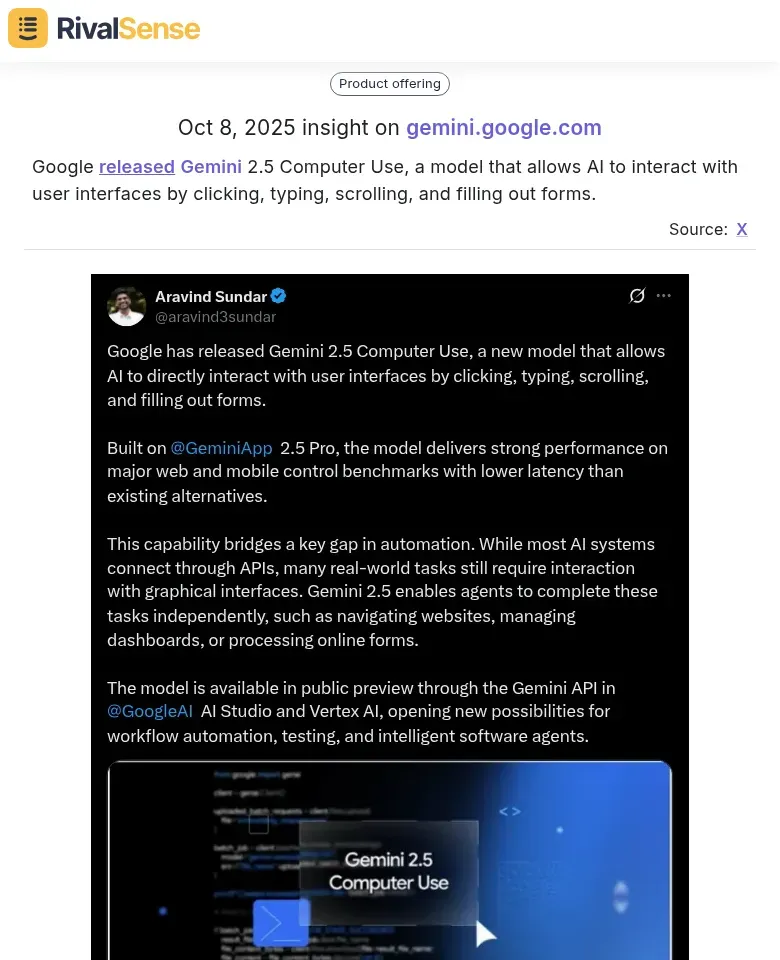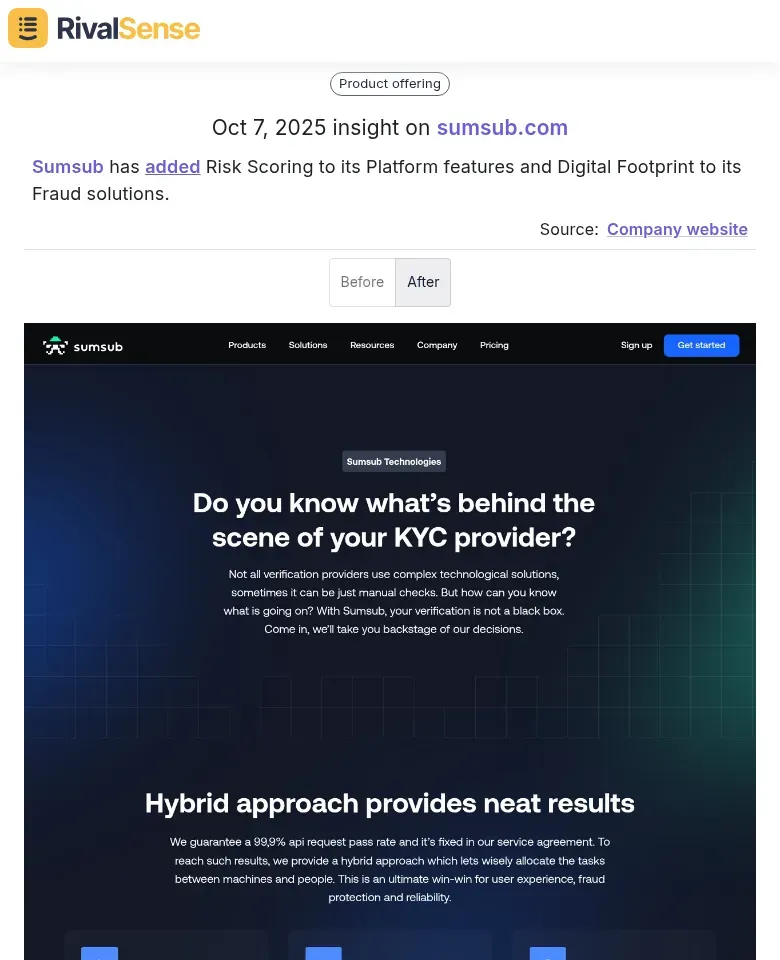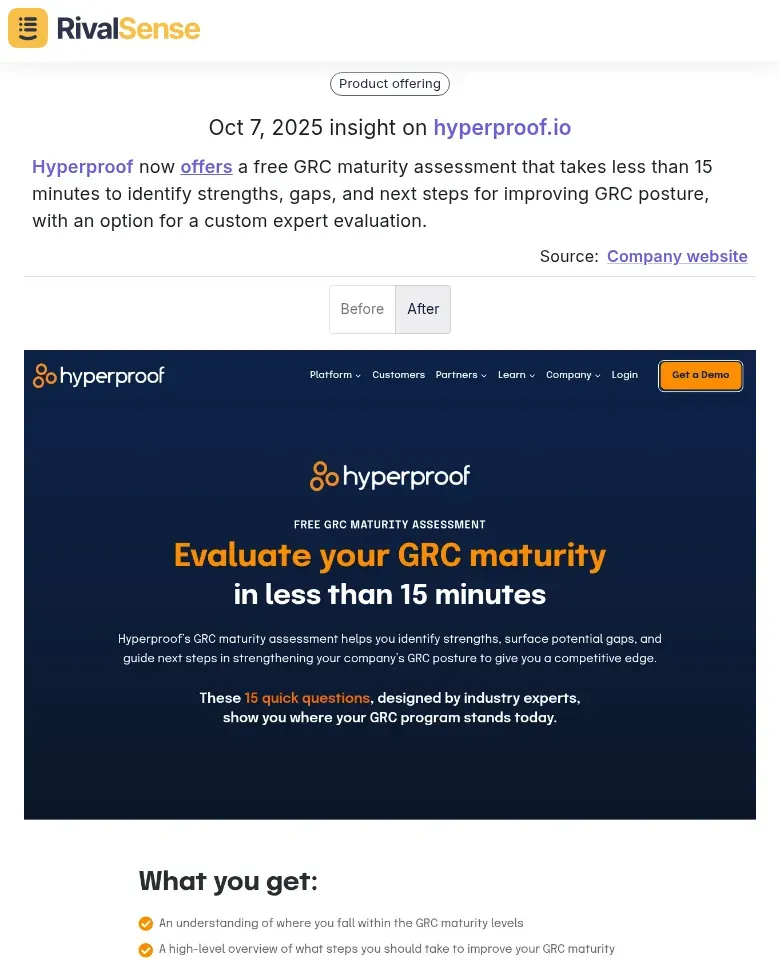Unlocking the Key Benefits of Competitor Analysis for Business Growth
In today's competitive business landscape, understanding your market isn't enough—you need to understand your competitors even better. While market research helps you find customers, competitor analysis helps you win them over. When combined strategically, these two approaches create a powerful foundation for sustainable business growth.
Why Competitor Analysis Matters More Than Ever
Competitor analysis isn't just about knowing who your rivals are—it's about understanding their strategies, strengths, weaknesses, and next moves. This intelligence empowers you to make proactive decisions that drive market leadership. By consistently analyzing competitors, you can transform potential threats into opportunities for innovation and growth.
Key benefits include:
- Identify market gaps your competitors are missing
- Anticipate industry trends before they become mainstream
- Avoid costly mistakes by learning from others' experiences
- Develop unique value propositions that stand out in crowded markets
- Make data-driven decisions about product development and pricing
The Practical Competitor Analysis Framework: A Step-by-Step Guide
A structured approach to competitor analysis ensures you cover all critical aspects without overwhelm. Following this step-by-step guide will help you build a comprehensive understanding of your competitive landscape and identify actionable insights.
Step 1: Identify Your True Competitors
Start by categorizing your competition to focus your efforts effectively. This initial step lays the groundwork for targeted intelligence gathering and strategic planning.
Direct Competitors: Companies offering similar products/services to the same target market
Indirect Competitors: Businesses solving the same customer problem with different solutions
Potential Competitors: Companies that could easily enter your market
Practical Tip: 🛠️ Create a competitor matrix with columns for product offerings, target audience, pricing, and market share.
Step 2: Track Key Competitive Intelligence Areas
Monitoring specific aspects of competitor activity provides a clear picture of their strategic direction. Consistent tracking across these areas helps you stay ahead of market shifts and emerging trends.
Product & Service Updates
- New feature launches
- Product improvements
- Service expansions
- Technology integrations
Pricing Strategies
- Price changes
- Discount campaigns
- Package restructuring
- Freemium models
Marketing & Positioning
- Brand messaging changes
- Content strategy shifts
- Social media campaigns
- Event participation
Operational Changes
- Management team updates
- Partnership announcements
- Regulatory compliance shifts
- Expansion into new markets
Step 3: Analyze Competitive Positioning
Evaluating each competitor's position in the market reveals strengths and weaknesses you can leverage. This analysis forms the basis for refining your own strategic direction and competitive edge.
Use this checklist to evaluate each competitor:
- [ ] What is their unique value proposition?
- [ ] How do they differentiate from others in the market?
- [ ] What are their apparent strengths and weaknesses?
- [ ] What customer segments do they serve best?
- [ ] How do their pricing and packaging compare?
- [ ] What is their market share trajectory?
Step 4: Identify Your Competitive Advantage
Based on your analysis, determine where you can excel and outperform competitors. This step translates insights into a clear strategy for market differentiation and growth.
- Cost Leadership: Can you offer similar value at lower prices?
- Differentiation: Can you provide unique features or services?
- Niche Focus: Can you serve a specific segment better than anyone?
Real-World Examples: How Competitor Insights Drive Business Strategy
Seeing actual competitor moves in context illustrates the power of timely intelligence. These examples show how tracking specific updates can directly influence your strategic decisions and keep you competitive.
Example 1: Product Innovation Tracking

Google released Gemini 2.5 Computer Use, a model that allows AI to interact with user interfaces by clicking, typing, scrolling, and filling out forms. Tracking such product launches is valuable because it helps you anticipate technological advancements and adapt your innovation roadmap to stay relevant in fast-evolving industries.
Example 2: Feature Expansion Awareness

Sumsub has added Risk Scoring to its Platform features and Digital Footprint to its Fraud solutions. Monitoring feature expansions like this is crucial as it reveals how competitors are enhancing their offerings to address customer pain points, allowing you to identify gaps in your own products or services and respond proactively.
Example 3: Marketing and Lead Generation Tactics

Hyperproof now offers a free GRC maturity assessment that takes less than 15 minutes to identify strengths, gaps, and next steps for improving GRC posture, with an option for a custom expert evaluation. Insights into such free offers are valuable because they highlight how competitors use lead-generation tactics to attract potential customers, giving you ideas to refine your own marketing strategies and conversion funnels.
The Modern Challenge: Staying Current with Competitor Intelligence
Traditional competitor analysis often falls short because manual tracking is inefficient and incomplete. In today's fast-paced environment, relying on outdated methods can leave you blindsided by competitor moves and market changes.
Common pitfalls include:
- Time-consuming to manually track multiple competitors
- Incomplete when relying on public information alone
- Outdated by the time analysis is complete
- Reactive rather than proactive
This is where modern competitive intelligence tools like RivalSense transform the process. Instead of spending hours scouring websites and social media, you can automatically track competitor product launches, pricing updates, event participations, partnerships, regulatory changes, management shifts, and media mentions across 80+ sources—all delivered in a comprehensive weekly email report.
Practical Implementation: Your Competitor Analysis Action Plan
Turning insights into action requires a consistent and organized approach. This action plan breaks down competitor monitoring into manageable tasks that fit into your regular business routines.
Weekly Monitoring Checklist
- [ ] Review competitor website updates and blog posts
- [ ] Monitor social media for campaign announcements
- [ ] Check for pricing or packaging changes
- [ ] Scan industry news for competitor mentions
- [ ] Update your competitor comparison matrix
Monthly Deep-Dive Activities
- [ ] Analyze competitor customer reviews and feedback
- [ ] Review their job postings for strategic hiring clues
- [ ] Assess their content marketing strategy effectiveness
- [ ] Evaluate their SEO performance and keyword targeting
- [ ] Update SWOT analysis for each major competitor
Quarterly Strategic Review
- [ ] Identify emerging competitive threats
- [ ] Assess market share changes
- [ ] Review your competitive positioning
- [ ] Update your differentiation strategy
- [ ] Plan counter-moves for anticipated competitor actions
Turning Intelligence into Action
Competitor analysis is worthless without implementation, so focus on translating findings into tangible business improvements. Use your insights to make informed decisions that enhance your market position and drive growth.
- Refine Your Messaging: Address competitor weaknesses in your value proposition
- Optimize Pricing: Position your offerings competitively
- Accelerate Innovation: Fill gaps competitors are ignoring
- Improve Customer Experience: Learn from competitor customer complaints
- Strengthen Marketing: Counter competitor campaigns effectively
The RivalSense Advantage: Continuous Competitive Intelligence
While manual competitor tracking can consume valuable time and resources, tools like RivalSense provide automated monitoring across company websites, social media, regulatory databases, and 80+ other sources. This ensures you never miss critical competitor movements while freeing up your team to focus on strategic implementation rather than data collection.
Key Takeaways for Business Leaders
- Competitor analysis should be continuous, not periodic
- Focus on actionable intelligence, not just data collection
- Combine competitor insights with market research for maximum impact
- Use technology to automate monitoring and focus on strategy
- The goal isn't to copy competitors, but to outperform them
By implementing a systematic competitor analysis approach, you'll move from reacting to market changes to anticipating them—transforming competitive threats into strategic opportunities for growth and differentiation.
Ready to streamline your competitor intelligence? Try out RivalSense for free at https://rivalsense.co/ to get your first competitor report today and start gaining actionable insights that drive your business forward.
📚 Read more
👉 PR Key Account Win Rate Tracking Cheat Sheet
👉 How Saatva's CrossFit Partnership Revealed Competitor Growth Tactics
👉 LinkedIn Competitor Analysis: Uncover Target Audience Insights
👉 Boost Productivity: Track Luxury Haircare Competitor Hiring
👉 Streamline Regulatory Compliance with Competitor Intelligence Insights
